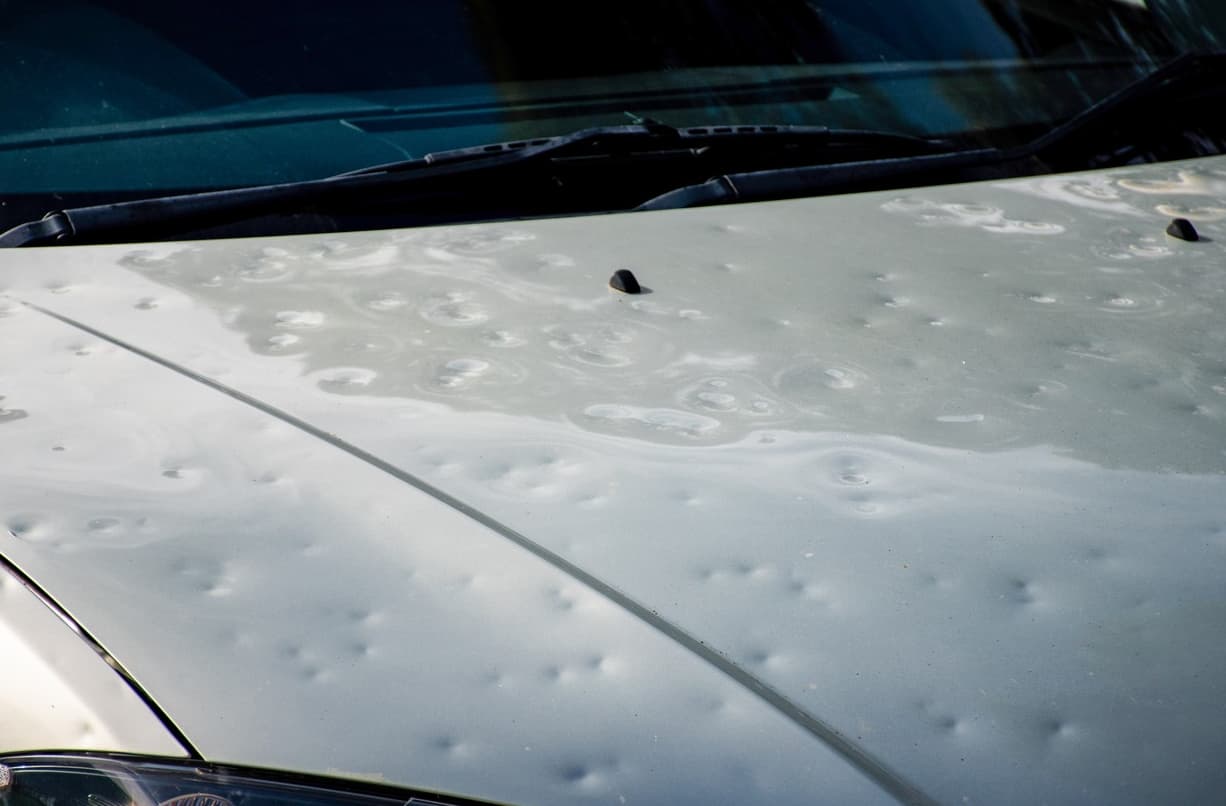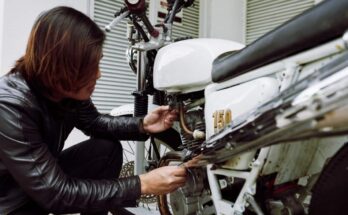Discovering your car covered in dents after a hailstorm can feel overwhelming, especially when you start wondering about hail damage repair cost.
Think of hail damage like getting multiple small injuries at once – each dent might seem minor, but together they create a significant problem that needs professional attention.
Understanding hail damage repair cost helps you make smart decisions during a stressful time.
Most car owners face repair bills between $2,000 and $4,000 for typical hail damage, though costs can range from $750 for minor damage to over $10,000 for severe cases.
The wide range exists because hail damage varies dramatically based on factors like storm intensity, hail size, and how long your car was exposed.
How Much Does Hail Damage Repair Cost on My Car?

This guide will teach you everything about hail damage repair costs in simple terms.
We will start with basic concepts and build your understanding step by step. By the end, you will know how to evaluate damage, understand repair methods, work with insurance, and make informed decisions that protect both your car and your wallet.
How Hail Damages Cars?
To understand repair costs, let us first learn how hail actually hurts your car. Picture hailstones as ice balls falling from thousands of feet in the sky. When they hit your car, they are moving incredibly fast – sometimes over 100 miles per hour.
Surface dents represent the most common type of damage. Think of your car’s metal panels like a thin aluminum can. When hail hits, it pushes the metal inward, creating small bowl-shaped dents. The good news is that if the paint does not crack, these dents can often be fixed using special techniques that do not require repainting.
Paint damage happens when hail hits hard enough to scratch or chip the painted surface. This is like scratching a painted wall – once the paint breaks, you need to repaint that area to protect the metal underneath and make it look right again. Paint damage significantly increases repair costs because it requires traditional body shop work.
Glass damage occurs when hail cracks or breaks your windshield, windows, or sunroof. Even small hailstones can chip glass, and these chips often spread into larger cracks over time. Glass replacement costs vary, but windshields typically cost between $200 and $500 to replace.
Trim and molding damage affects the plastic and rubber parts around your windows and lights. While these might look like minor cosmetic issues, replacing trim pieces can be surprisingly expensive due to part costs and labor time.
How Professional Technicians Assess Hail Damage?
Professional damage assessment works like a detailed medical examination for your car. Trained technicians use special methods to find every problem and calculate accurate repair costs.
The process starts with special lighting inspection. Technicians use bright LED lights positioned at specific angles to reveal dents that normal lighting might miss. This is similar to how doctors use special lights to examine patients – the right lighting makes problems visible that you might otherwise overlook.
Damage counting and categorization involves examining each dent individually. Technicians classify dents by size – small (quarter-sized), medium (golf ball-sized), large (tennis ball-sized), or extra-large (baseball-sized or bigger). Each size category has different repair time requirements and costs.
Professional software helps calculate accurate estimates. Modern estimating programs take the damage information and determine costs based on current labor rates, material prices, and industry-standard repair times. This ensures consistency and helps insurance companies understand and approve repair estimates.
The assessment also includes checking for hidden damage that might not be immediately obvious. Experienced technicians know to look for problems with door seals, electronic components, or structural issues that could affect safety or functionality.
Typical Hail Sizes in Washington, DC Region?
Understanding common hail sizes in your area helps you know what to expect for damage and costs. The Washington, DC region typically experiences hail ranging from pea-size to golf ball-size, with most storms producing stones between dime-size and quarter-size.
Here is how different hail sizes affect your car and repair costs:
Pea to dime size (up to 3/4 inch) usually causes little to no damage on most vehicles. You might see minor marks on very soft surfaces, but most cars can withstand this size hail without needing repairs.
Quarter to golf ball size (1 to 1.75 inches) creates the moderate damage most common in the Washington, DC area. This size typically results in repair costs between $2,000 and $4,000 for average vehicles.
Baseball size and larger (2.75+ inches) can completely destroy vehicles. When this extreme hail occurs, cars often become total losses because repair costs exceed the vehicle’s value. Fortunately, this size hail is rare in most areas.
The western suburbs of Washington, DC, including Loudoun and Fauquier counties, occasionally experience larger hail due to their proximity to the Blue Ridge Mountains. These areas can see more severe storms that produce destructive hail capable of totaling vehicles.
Hail Damage Repair Methods?
Understanding repair methods helps you make informed decisions about your car’s restoration. Different types of damage require different repair approaches, each with distinct cost implications.
Paintless Dent Repair represents the most common and economical method for hail damage. Think of PDR like massage therapy for your car’s metal panels. Skilled technicians use specialized tools to carefully push dents out from behind the damaged area, gradually restoring the original shape without affecting the factory paint.
PDR works best when the paint remains intact and the dents are not too severe. The process requires significant skill and experience, similar to learning a musical instrument – it takes years to master the techniques needed for professional results.
Glue pulling techniques solve problems in areas where technicians cannot access the back of dents. This method involves attaching special tabs to the dent surface using automotive adhesive, then carefully pulling the dent out from the front. After completing the repair, the adhesive and tabs are removed without leaving any trace.
Traditional body shop repair becomes necessary for severe damage where the metal is stretched, torn, or the paint is damaged. This process involves filling damaged areas, sanding smooth, priming, painting, and refinishing to match surrounding areas. Traditional repair costs significantly more than PDR but can restore even severely damaged panels.
Combination approaches often provide the best value for vehicles with mixed damage types. A single car might receive PDR for most dents, glue pulling for certain areas, and traditional bodywork for severely damaged sections.
Factors That Affect Repair Cost?
Several interconnected factors determine your final repair cost. Understanding these helps you anticipate expenses and evaluate estimates from different repair shops.
Vehicle size and type directly affects cost because larger vehicles have more surface area exposed to hail damage. A compact car might have 50 dents while an SUV from the same storm could have 150 dents, simply due to size differences.
Paint system complexity influences repair options and costs. Basic paint jobs allow for straightforward PDR repair, while complex finishes like metallic, pearl, or matte surfaces require specialized techniques and materials when paint damage occurs.
Damage density and location affects labor time significantly. A car with 100 small dents spread across easily accessible areas costs less to repair than one with 50 dents in hard-to-reach locations that require extensive disassembly.
Material considerations create additional cost variables. Aluminum panels require different tools and techniques than steel panels. Some modern vehicles have sensors or cameras integrated into body panels that need special handling during repairs.
Geographic factors influence pricing in your area. Labor rates vary between different regions, with major metropolitan areas typically commanding higher prices than rural locations.
How Much Does Hail Damage Repair Cost?
Actual repair costs depend on the factors we discussed, but understanding typical ranges helps you budget appropriately and evaluate repair estimates.
Minor damage (20-50 small dents, no paint damage) typically costs $750 to $2,000 and takes 1-3 days to complete using PDR techniques.
Moderate damage (50-150 mixed-size dents, possible minor paint issues) usually ranges $2,000 to $4,000 and requires 3-7 days for completion.
Severe damage (extensive denting, significant paint damage, broken glass) often costs $4,000 to $8,000 and takes 1-2 weeks due to complexity.
Extreme damage from the largest hailstorms can exceed $10,000 and might result in total loss determinations from insurance companies.
Individual dent costs provide another perspective: small dents cost $75 to $125 each, medium dents $125 to $200 each, and large dents $200 to $400 each. These per-dent costs explain why vehicles with hundreds of dents generate high repair estimates.
Insurance Coverage for Hail Damage
Comprehensive auto insurance typically covers hail damage, making this natural disaster manageable for most vehicle owners. Understanding how insurance works helps you navigate the claims process effectively.
Comprehensive coverage protects against weather-related damage, theft, vandalism, and other non-collision events. Hail damage falls clearly within this coverage, meaning your insurance should pay for repairs minus your deductible amount.
Filing a claim begins with documenting damage thoroughly before moving your vehicle. Take photographs from multiple angles and contact your insurance company promptly to report the claim.
Insurance adjusters will inspect your vehicle and create repair estimates based on their assessment. This estimate serves as the starting point for determining coverage amounts and approving repairs.
Deductibles directly affect your out-of-pocket costs. Lower deductibles mean higher premiums but reduced costs when claims occur. Consider your deductible choice based on potential hail damage costs in your area.
Will Filing a Claim Increase My Rates?
Comprehensive claims like hail damage typically do not directly increase insurance rates because they represent unavoidable acts of nature rather than driver error. Most insurance companies do not penalize policyholders for weather-related claims the same way they might for at-fault accidents.
However, multiple claims within short periods might raise concerns about overall risk levels. Insurance companies use complex formulas considering numerous factors when setting premiums, making exact rate predictions difficult.
The cost of major hail damage repair often exceeds several years of potential premium increases, making insurance claims the more economical choice in most situations.
Should You Use an Insurance-Recommended Repair Shop?
Insurance companies often recommend preferred repair shops, but you have the right to choose any licensed facility. Preferred shops offer streamlined processing and established quality standards, while independent shops might provide specialized expertise or more personalized service.
Research potential shops by checking online reviews, visiting facilities, and asking about technician certifications and warranty terms. Quality should guide your decision more than convenience or insurance preferences.
Why Choose a Local, Reputable PDR Company?
Local, established companies provide ongoing accountability and typically offer better security, equipment, and experienced technicians compared to temporary traveling operations. These businesses depend on community reputation for long-term success, creating strong incentives for quality work.
Avoid temporary tent operations and traveling hail chasers who often prioritize speed over quality and disappear after completing local work.
Tips to Save Money on Hail Damage Repair
Smart strategies can reduce costs without compromising quality. Understand your insurance coverage thoroughly and maximize available benefits. Consider timing – waiting for peak demand to normalize might result in better pricing if damage is minor.
Obtain multiple estimates from different facilities, comparing pricing, methods, and warranty terms. For older vehicles, consider partial repairs focusing on visible damage and safety issues.
Balance cost against quality carefully – poor repairs often need redoing, ultimately costing more money and creating additional problems.
FAQs:
- How long does hail damage repair take?
Most repairs require 3-9 days, depending on damage severity and shop workload. Minor PDR work might finish in 1-2 days, while extensive damage requiring bodywork can take 2-3 weeks.
- Can hail damage be completely invisible after repair?
Professional PDR techniques can make most hail damage completely invisible when paint remains intact. Skilled technicians can restore panels to their original condition without any trace of previous damage.
- Will my car’s value be affected by hail damage repair?
Properly completed PDR repairs typically do not affect resale value. However, bodywork and repainting might have some impact, though insurance claim records could be more significant factors.
- Should I attempt DIY hail repair?
Professional hail damage repair requires specialized tools, training, and experience. DIY attempts often create additional damage that costs more to fix properly.
Also Check:
- How Much Does Sunroof Installation Cost In Your Car
- How Much Does It Cost to Tint Car Windows
- How Much Does It Cost To Replace A Steering Coupler
- How Much Does Quick Quack Car Wash Cost
- How Much Does It Cost To Wrap A Honda Civic
Conclusion
Understanding hail damage repair cost empowers you to navigate this challenging situation confidently.
Most repairs fall between $2,000 and $4,000 for moderate damage, with comprehensive insurance typically covering costs minus your deductible.
Key points to remember include documenting damage thoroughly, choosing reputable repair facilities with proper certifications, understanding your insurance rights, and balancing cost considerations with quality requirements.
Professional repairs protect your vehicle’s value and ensure lasting results that maintain safety and appearance standards.
Take time to research options, ask questions, and make informed decisions based on both cost and quality factors. This approach ensures you receive appropriate repairs while protecting your investment in your vehicle.



